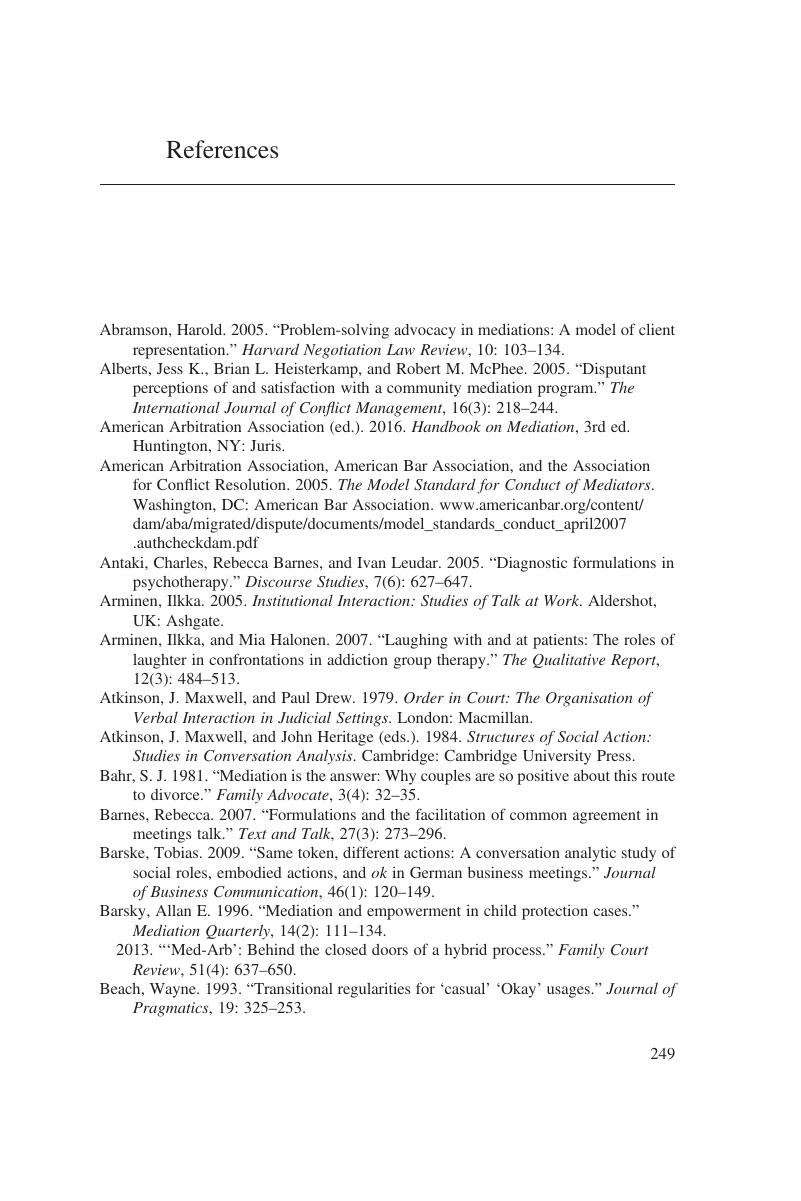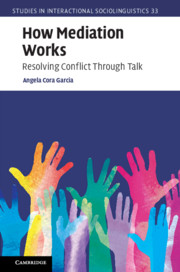Book contents
- How Mediation Works
- Studies in Interactional Sociolinguistics
- How Mediation Works
- Copyright page
- Dedication
- Contents
- Acknowledgments
- 1 Introduction
- 2 The Interactional Organization of Mediation
- 3 Minimizing and Managing Argumentative Talk in Mediation
- 4 Disputants’ Opening Statements and Persuasive Arguments in Mediation
- 5 Mediator Representation of Disputants’ Positions
- 6 Soliciting Proposals for Resolution of the Dispute
- 7 Producing Ideas for Resolution of the Dispute
- 8 Mediator Teamwork
- 9 Autonomy, Empowerment, and Neutrality in Divorce and Small Claims Mediation
- Appendix: Transcription Symbols
- References
- Index
- References
References
Published online by Cambridge University Press: 29 July 2019
- How Mediation Works
- Studies in Interactional Sociolinguistics
- How Mediation Works
- Copyright page
- Dedication
- Contents
- Acknowledgments
- 1 Introduction
- 2 The Interactional Organization of Mediation
- 3 Minimizing and Managing Argumentative Talk in Mediation
- 4 Disputants’ Opening Statements and Persuasive Arguments in Mediation
- 5 Mediator Representation of Disputants’ Positions
- 6 Soliciting Proposals for Resolution of the Dispute
- 7 Producing Ideas for Resolution of the Dispute
- 8 Mediator Teamwork
- 9 Autonomy, Empowerment, and Neutrality in Divorce and Small Claims Mediation
- Appendix: Transcription Symbols
- References
- Index
- References
Summary

- Type
- Chapter
- Information
- How Mediation WorksResolving Conflict Through Talk, pp. 249 - 268Publisher: Cambridge University PressPrint publication year: 2019

